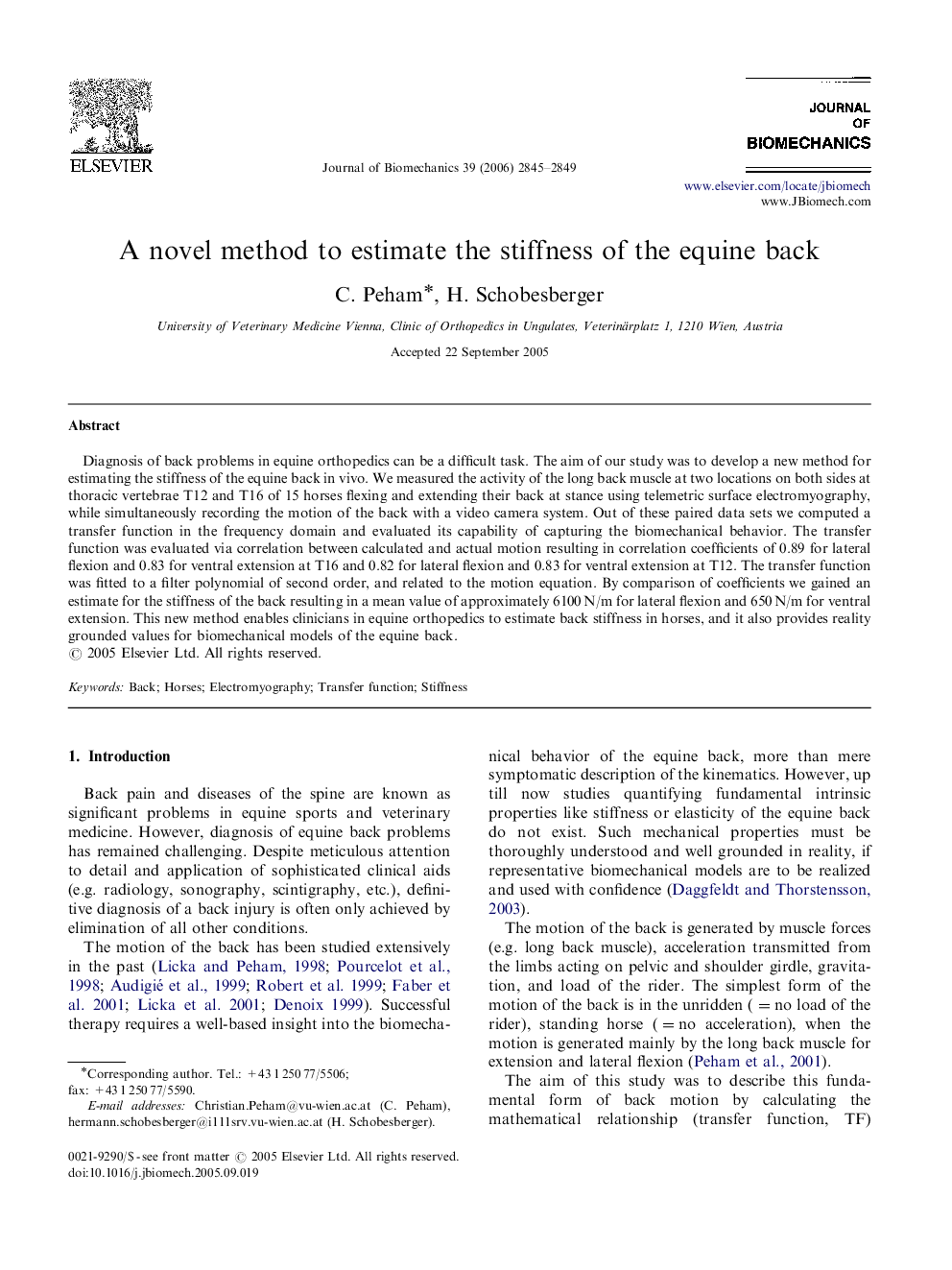| Article ID | Journal | Published Year | Pages | File Type |
|---|---|---|---|---|
| 874608 | Journal of Biomechanics | 2006 | 5 Pages |
Diagnosis of back problems in equine orthopedics can be a difficult task. The aim of our study was to develop a new method for estimating the stiffness of the equine back in vivo. We measured the activity of the long back muscle at two locations on both sides at thoracic vertebrae T12 and T16 of 15 horses flexing and extending their back at stance using telemetric surface electromyography, while simultaneously recording the motion of the back with a video camera system. Out of these paired data sets we computed a transfer function in the frequency domain and evaluated its capability of capturing the biomechanical behavior. The transfer function was evaluated via correlation between calculated and actual motion resulting in correlation coefficients of 0.89 for lateral flexion and 0.83 for ventral extension at T16 and 0.82 for lateral flexion and 0.83 for ventral extension at T12. The transfer function was fitted to a filter polynomial of second order, and related to the motion equation. By comparison of coefficients we gained an estimate for the stiffness of the back resulting in a mean value of approximately 6100 N/m for lateral flexion and 650 N/m for ventral extension. This new method enables clinicians in equine orthopedics to estimate back stiffness in horses, and it also provides reality grounded values for biomechanical models of the equine back.
